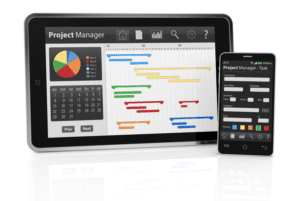
The higher the CFAT, the better positioned a business is to make distributions to investors. For example, due to rapid technological advancements, a straight line depreciation method may not be suitable for an asset such as a computer. Salvage value estimation has been a part of asset management practices for as long as businesses have needed to account for the depreciation of their assets. The concept helps in understanding how much value an asset retains over time and is critical in determining the annual depreciation expenses for financial reporting.
- Constant use and other factors like the nature and quality of these assets cause a continual deterioration.
- Common approaches include straight-line, declining balance, and units of production.
- Salvage value estimation has been a part of asset management practices for as long as businesses have needed to account for the depreciation of their assets.
- Add the present value of the salvage value to the present value of the other cash inflows of the project, such as revenues, cost savings, or tax benefits.
- For tax purposes, the IRS typically requires businesses to use the Modified Accelerated Cost Recovery System (MACRS) to calculate depreciation.
Depreciation Rate:

It is an important factor to consider when evaluating the profitability and feasibility of a project or investment. Salvage value can be affected by various factors, such as depreciation methods, tax implications, market conditions, and disposal costs. Calculate the depreciation expense each year using an appropriate depreciation method (e.g., straight-line or double-declining balance).4.
What are some factors that can impact after-tax salvage value?
- The salvage value is the estimated residual value of an asset at the end of its useful life.
- This value is determined by various factors such as the condition of the asset, market demand, and technological advancements.
- Subtract the total accumulated depreciation from the original cost to find the remaining book value.5.
- Net cash flows are different from net income because some expenses are non-cash such as depreciation, etc.
- He has worked as an accountant and consultant for more than 25 years and has built financial models for all types of industries.
- Simply put, when we deduct the depreciation of the machinery from its original cost, we get the salvage value.
The balance sheet shows the net book value of an asset, which is the original cost minus accumulated depreciation, helping stakeholders understand the asset’s current worth. The double-declining balance method is a depreciation technique used to calculate the reduction in value of an asset over its useful life. This method allows for faster depreciation in the earlier years and slower depreciation in the later years. Some argue for using the book value approach, which considers the asset’s original cost minus accumulated depreciation. This method provides a conservative estimate, as it assumes the asset will have minimal value at the end of its useful life. The carrying value of the asset is then reduced by depreciation each year during the useful life assumption.
Why is Scrap Value not Reduced to the Present Value?
One method of determining depreciation involves considering the asset’s salvage value. Companies can sell these parts or scrap to recover some of the asset’s value, thus reducing the overall cost of ownership. Catch Up Bookkeeping This method assumes that the salvage value is a percentage of the asset’s original cost.
What is the formula for depreciation with salvage value?

If your business owns any equipment, vehicles, tools, hardware, buildings, or machinery—those are all depreciable assets that sell for salvage value to recover cost and save money on taxes. Starting from the original cost of purchase, we must deduct the product of the annual depreciation expense and the contra asset account number of years. Salvage value is the estimated book value of an asset after depreciation is complete, based on what a company expects to receive in exchange for the asset at the end of its useful life. As such, an asset’s estimated salvage value is an important component in the calculation of a depreciation schedule. From there, accountants have several options to calculate each year’s depreciation. The original price or initial cost of an asset includes its purchase price, installation costs, and any other expenses incurred to bring the asset to a usable state.
How Does the Salvage Value Calculator Beneficial?

But generally, salvage value is important because it’s the value a company puts on the books for that thing after it’s fully depreciated. It’s based on what the company thinks they can get if they sell that thing when it’s no longer useful. Sometimes, salvage value is just what the company believes it can get by selling broken or old parts of something that’s not working anymore. Learn how to calculate the after-tax salvage value of business assets, a crucial factor in financial decision-making and accurate financial reporting. This guide provides a detailed explanation and practical examples to help you make informed decisions. On the other hand, the market value approach takes into account the current market conditions and the potential resale value of the asset.

What Is Salvage Value in Accounting and How Is It Calculated?
In the case of capital losses, they can often offset other capital gains or be carried forward to offset future gains. This means that the computer will be used by Company A for 4 years and then sold afterward. The company also estimates that they would be able to sell the computer at a salvage value of $200 at the end of 4 years. The Internal Revenue Service (IRS) requires companies to estimate a “reasonable” salvage salvage value value. On the other hand, if a company is uncertain about a particular asset’s useful life and significance, then there will be an approximately lower number of years as estimated. At the same time, this also means a greater salvage value to support the asset on the books after depreciation or sell the asset at its respective salvage value.
